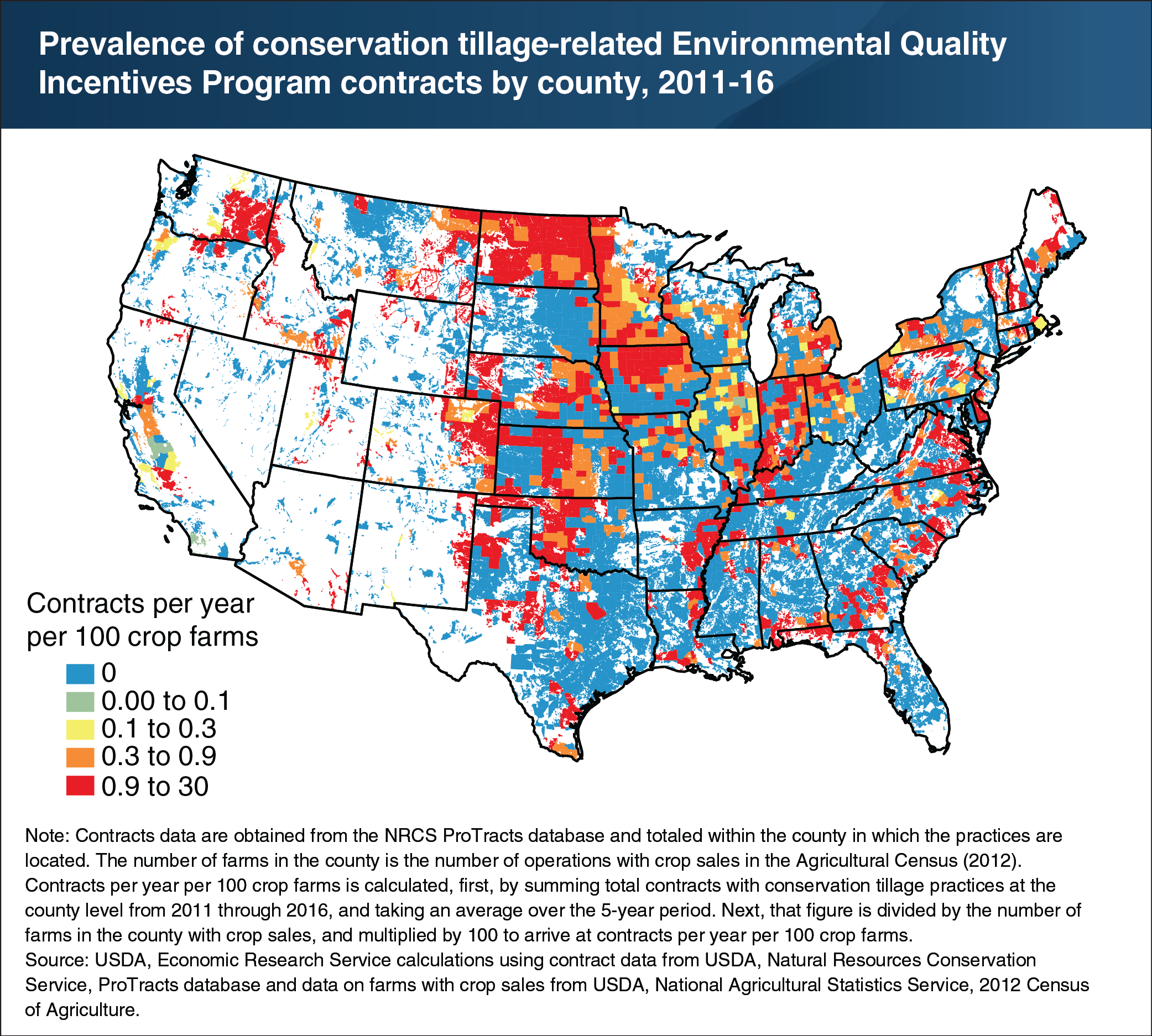Prevalence of USDA Environmental Quality Incentives Program contracts for conservation tillage varies by region
- by Maria Bowman and Steven Wallander
- 9/12/2018

USDA offers financial assistance to farmers for implementing a wide range of conservation practices through its Environmental Quality Incentives Program (EQIP). Conservation tillage practices—including no-till, strip-till row crop planting, and mulch till—can improve soil health, reduce erosion, and reduce nutrient pollution to lakes, streams, and rivers. Farmers practicing no-till plant crops without using any sort of plow to turn residue from the prior crop into the soil. Strip tillage disturbs only the soil within the planting row, while mulch tillage minimizes soil disturbance and distributes crop residue. Between 2011 and 2016, the prevalence of EQIP contracts that included conservation tillage practices (as defined in the note) varied regionally. For example, the share was relatively high in North Dakota and northern Iowa, but much lower in neighboring counties in South Dakota. These variations may be due to underlying differences in regional adoption patterns, as well as differences in State and local funding priorities through EQIP. This chart updates data found in the April 2013 ERS report, “The Role of Conservation Programs in Drought Risk Adaptation.”
We’d welcome your feedback!
Would you be willing to answer a few quick questions about your experience?

